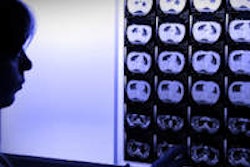A new list of 26 low-value medical procedures published in JAMA Internal Medicine includes a dozen imaging exams. The exams -- defined as procedures that cost a lot of money without yielding significant benefits -- could be costing Medicare as much as $8.5 billion a year, according to the authors.
Services defined as low-value, while constituting less than 3% of Medicare spending, affect nearly half of the program's beneficiaries in a given year. The figures may reflect overuse of the exams both nationally and regionally, wrote the authors, who estimated that low-value exams cost about $200 per beneficiary in 2009.
"Low-value services appear to be rather prevalent in the U.S. healthcare system," said lead author and PhD candidate Aaron Schwartz, from Harvard Medical School's department of healthcare policy, in an interview with AuntMinnie.com. "We only looked at 26 measures and 26 specific services, but even just looking at those 26, one-quarter of Medicare beneficiaries experienced at least one of those services in a given year."
Imaging figures prominently
Among those 26 exams deemed low-value, 12 involve medical imaging, in tests that range from preoperative chest radiography to carotid artery screening for asymptomatic patients, imaging for back pain, and CT for headache and rhinosinusitis (JAMA Internal Medicine, May 12, 2014).
Schwartz and colleagues began by looking at lists of exams characterized as low value by several organizations, and then threw out exams that didn't have enough data to determine their effectiveness. The remaining services were examined using a random sample of Medicare claims from 2009. Regional claims data were also evaluated to look for patterns of overuse.
In all, the study looked at use and spending in 26 measures of low-value services in six categories: cancer screening, diagnostic and preventive testing, preoperative testing, imaging, cardiovascular testing and procedures, and other surgical procedures, the authors wrote.
The researchers had to make a trade-off between sensitivity, which captures more inappropriate use, and specificity, which results in less misclassification of appropriate use as inappropriate. To account for this variability, they developed two versions of each measure, one with higher sensitivity (lower specificity) and the other with higher specificity (lower sensitivity), and reported results for both. They then calculated two spending levels for each test, one based on higher sensitivity and one on higher specificity.
The study sample included 1,360,908 beneficiaries, among which the researchers found 1,094,374 instances of "low-value" care provided per the study criteria. Low-value services accounted for 80 services per 100 beneficiaries, according to the authors. Extrapolated to the entire Medicare population in 2009, there were 21.9 million instances of low-value care.
The 12 low-value medical imaging exams were distributed among several categories, including diagnostic, preventive, and preoperative testing. Click here to view a table of the exams.
Using the more sensitive low-value care measures, spending for services added $8.5 billion for the entire Medicare system, or about $310 per beneficiary (2.7% of total annual spending). Using the more specific measures, spending for low-value services totaled much less, at $1.9 billion or $71 per beneficiary (0.6% of total annual spending).
According to the study authors, the Medicare data have limitations, but they believe that claims-based measures of low-value care could be useful for tracking overuse and evaluating programs that aim to reduce it.
Organized radiology responds
Don't look for organized radiology to drop everything and accept the report's conclusions anytime soon. The American College of Radiology (ACR), for example, has defined its own Choosing Wisely criteria for appropriate imaging that were included in the Protecting Access to Medicare Act of 2014 (also known as the sustainable growth rate or SGR patch).
In its statement commenting on the paper, ACR noted that the law will require providers ordering imaging exams to consult physician-developed appropriateness criteria when prescribing advanced imaging procedures. The law also directs the U.S. Department of Health and Human Services to implement mechanisms such as electronic health record-based clinical decision-support systems.
Finally, data show that imaging use and costs are down significantly since 2006, despite an aging population, ACR said.
But the Harvard team marched to a different drummer in its consideration of low-value exams and in formulating its conclusions. Schwartz said that his group's study used a particular methodology to try to detect low-value services via Medicare claims, while acknowledging that many other methods have been proposed to measure overuse.
"Ours is one preliminary step in that direction, and I don't think there's any reason to say that these specific measures that we used are the end-all, be-all; indeed, our hope is that others develop some more measures and build upon what we've done or what they've already done," he said.
The motivation for the JAMA IM study was that of the many quality measures developed, very few relate to overuse, with the notable exception of a study on back pain, Schwartz said. That 2013 study by Mafi et al showed that back pain imaging rates are actually rising, despite the procedure's low value, Schwartz said.
"In terms of whose measures are better, our study doesn't address that question, and of course the most accurate measures should be the ones that are utilized," he said.
As for the data cited by ACR showing declining imaging rates, "the most important question is, is low-value imaging going down?" Schwartz said.
For its part, ACR believes that the Protecting Access to Medicare Act covers the topic of low-value exams comprehensively, the organization told AuntMinnie.com in an email.
"The challenge of implementing recommendations of Choosing Wisely and other value-based initiatives to ensure that patients get only necessary medical imaging," as alluded to in Schwartz et al, "has been addressed through groundbreaking quality and safety measures" in the recently passed law, ACR wrote in a statement.



















